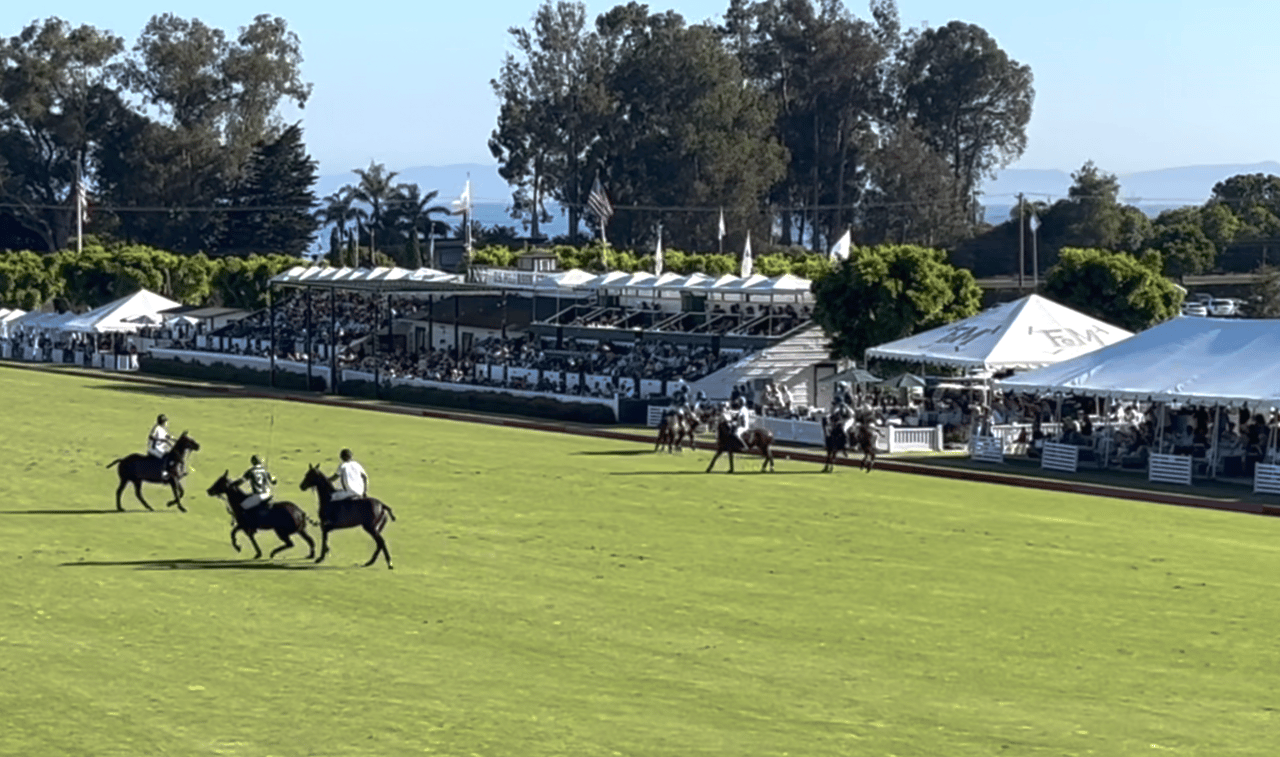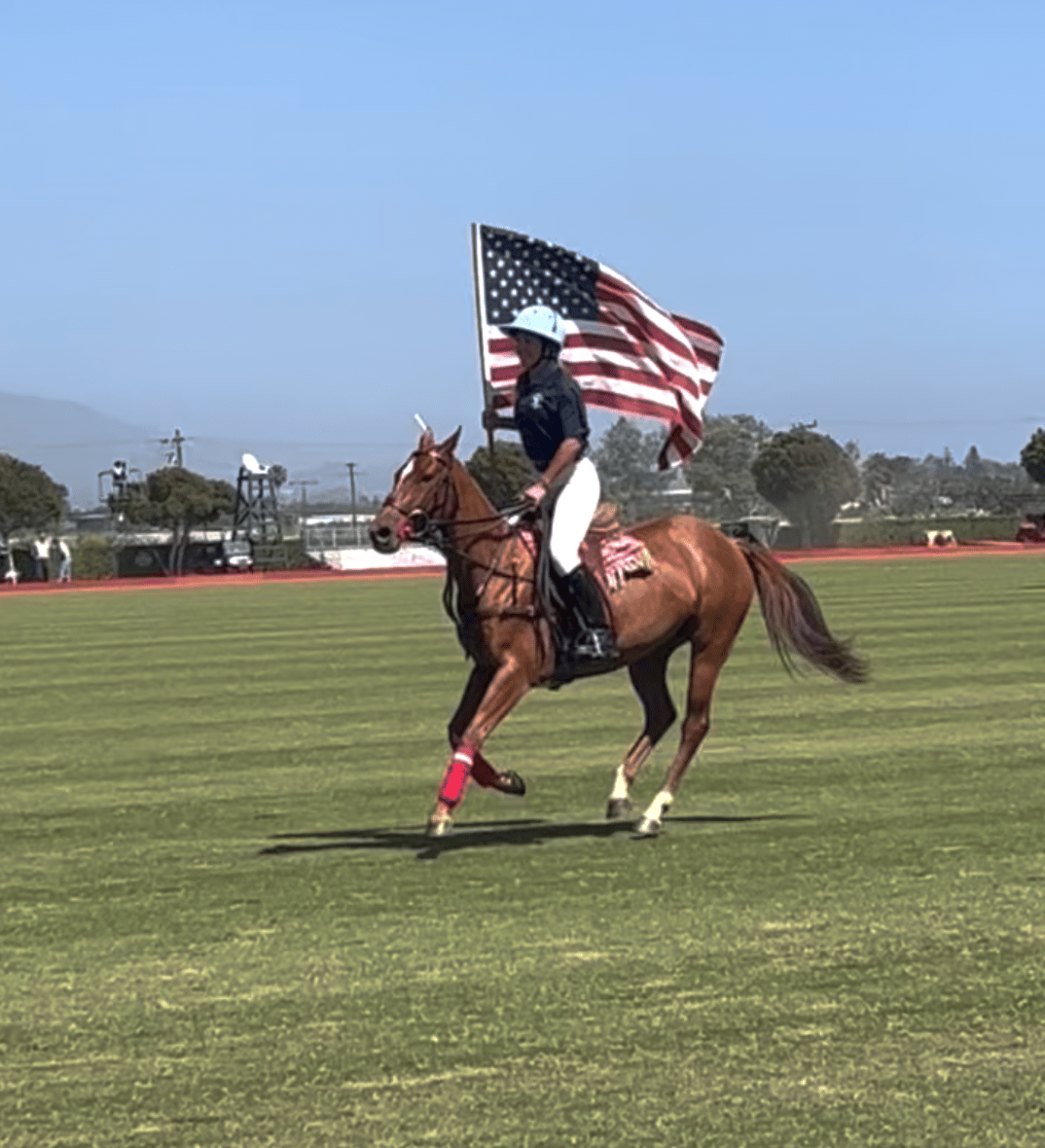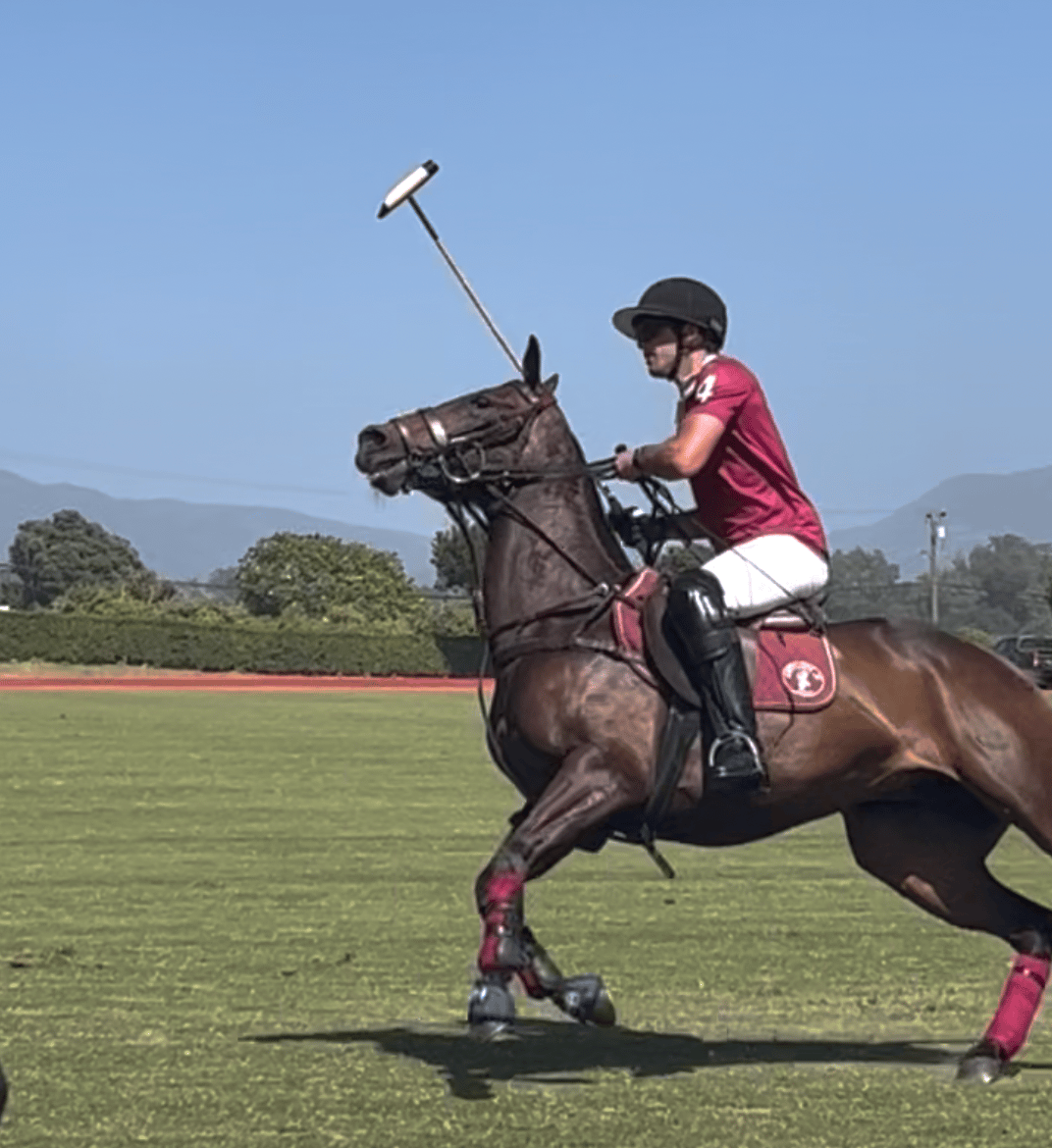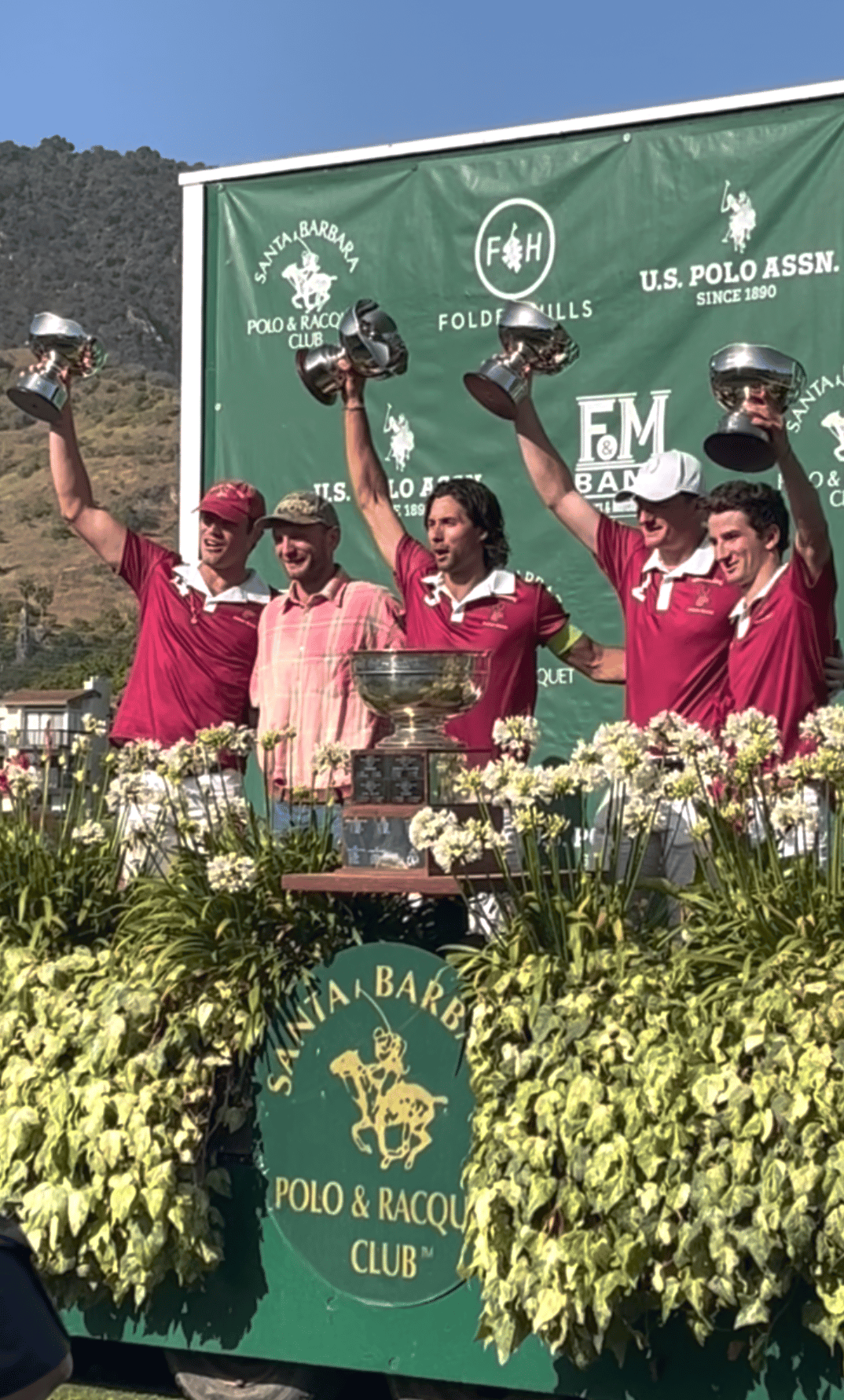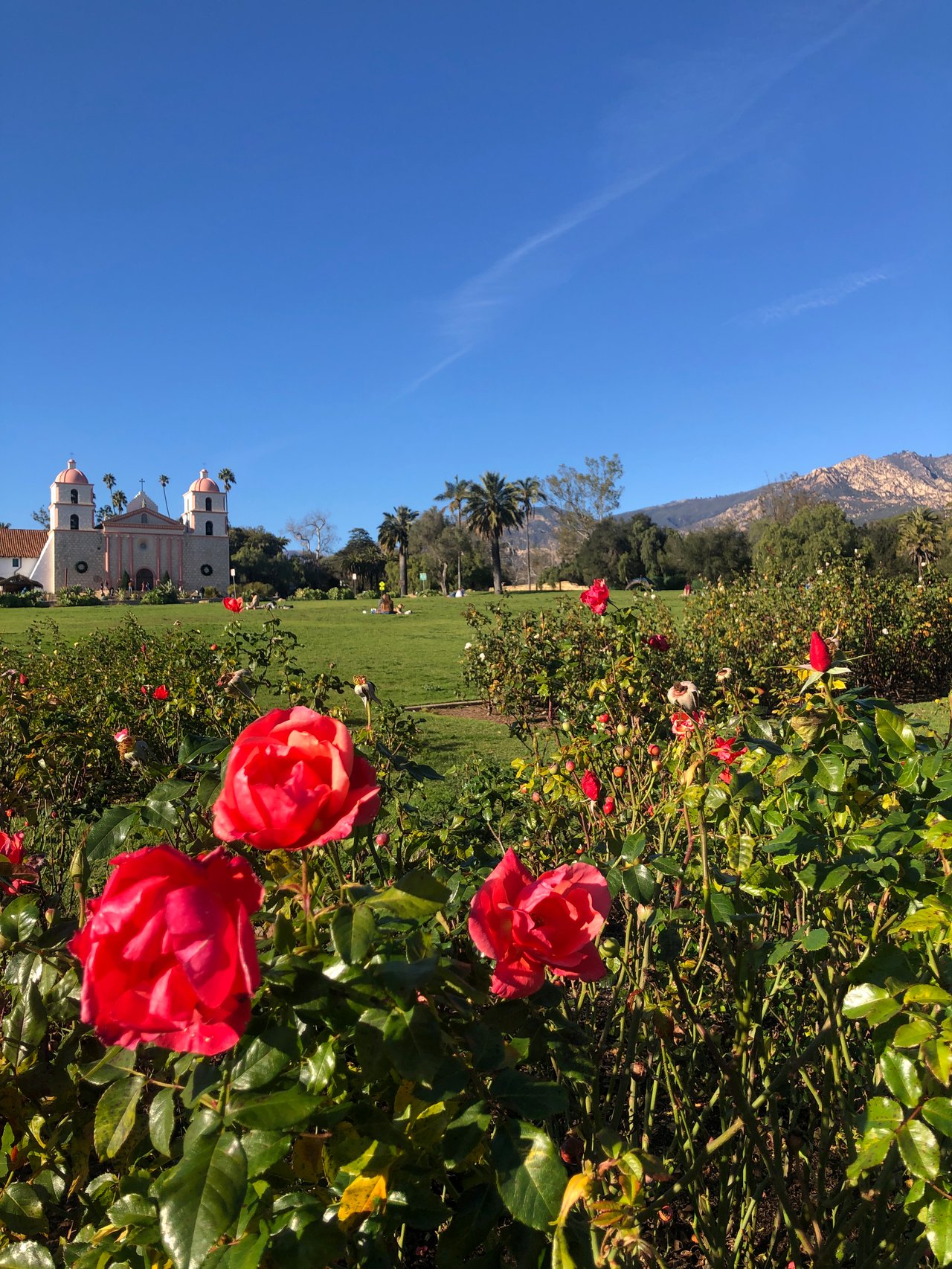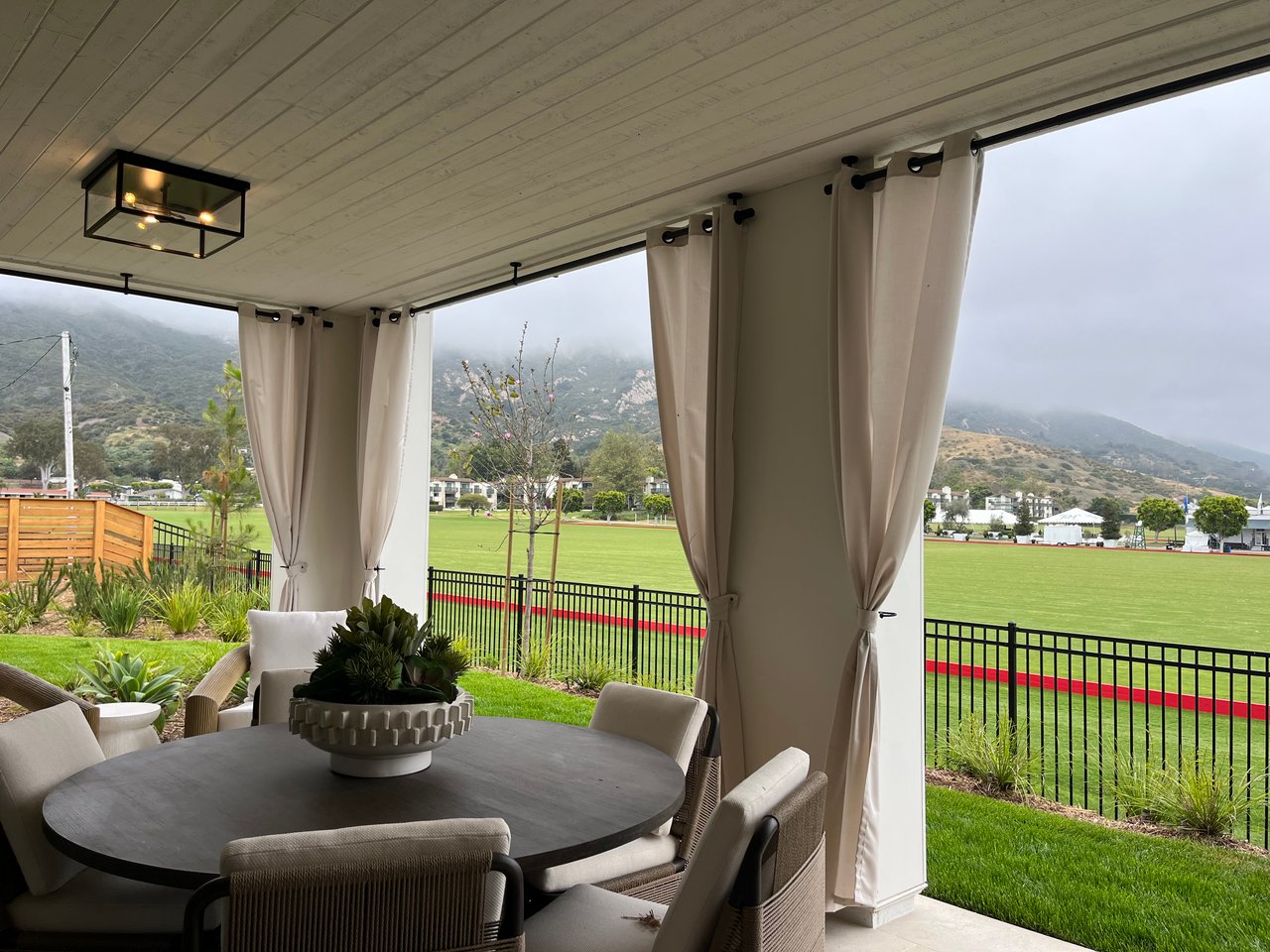The Complete Insider’s Guide to Polo in Santa Barbara
Everything you need to know before you hit the field this season
Polo: it's fast-paced, it’s elegant, it involves horses thundering across the field at top speed while athletes swing mallets with the precision of a golf pro and the guts of a hockey player. It’s often called the sport of kings, but here in Santa Barbara, it's also the sport of a really good Sunday afternoon.
Whether you’re brand new to the game or just want to elevate your sideline savvy, here’s everything you need to know before attending a match at the Santa Barbara Polo & Racquet Club - one of the most beautiful and prestigious polo venues in the country.
A Brief History of Polo
Polo is one of the oldest team sports in the world. Its roots trace back over 2,000 years to Persia, where it was originally used as training for cavalry units. Over time, the game spread to other parts of Asia, and eventually, the British brought it to the West in the 19th century. Today, polo is played in more than 80 countries - and lucky for us, Santa Barbara is home to one of the most active clubs in the U.S.
Understanding the Game
Each polo match is divided into periods called chukkers (or chukkars) - usually six in total, each lasting seven and a half minutes. There are four players on each team, all on horseback, and the objective is simple: score by hitting the ball through the opposing team’s goalposts using a long-handled mallet. It’s like hockey meets horseback riding - with a twist of high society. Teams switch sides after each goal in order to neutralize any advantage from field conditions and ensure equal playing time in each direction. This unique aspect of polo can be surprising to new spectators – especially when you’re trying to figure out which team is scoring where!
Let’s Talk About the “Ponies” (Yes, They’re Actually Horses)
One of the first things you'll hear in polo lingo is the word “pony.” But don't be fooled - these are not small horses. The term polo pony is a traditional one, but the horses used in modern polo are typically full-sized, agile, and lightning-fast Thoroughbreds or Thoroughbred-crosses. They average about 15 to 16 hands high, which makes them a bit smaller and more nimble than traditional racehorses.
Why call them ponies, then? It’s a holdover from the sport’s early days, and the name just stuck.
How Many Horses Does a Polo Player Use in a Game?
A lot. Each player brings at least 4 to 6 horses per match - and elite players might rotate through 8 to 10 horses during a high-goal game. That’s because:
- Each chukker is physically intense for the horse - they’re sprinting, stopping, turning, and accelerating constantly.
- To prevent fatigue or injury, players switch horses between chukkers, and sometimes even mid-chukker during particularly fast-paced matches.
- Fresh horses = higher performance. Think of it like Formula 1 pit stops - but with hooves.
Horse Changes Are Spectacular to Watch
One of the coolest things you'll see on the sidelines is a player leaping from one horse to the next while the game is in motion. These mid-chukker swaps happen in seconds, often without missing a beat - it's a coordinated ballet between rider, grooms, and horses.
It’s not just athleticism - it’s art.
What Makes a Great Polo Pony?
Polo horses are the true athletes of the game. A great pony needs to be:
- Incredibly agile – able to pivot quickly and follow the ball at top speed
- Brave and unflappable – there’s a lot going on around them: mallets swinging, other horses bumping, sudden stops and starts
- Responsive to subtle cues – players guide them with just a shift in weight or light touch of the reins
Training & Care: Next-Level Horse Management
Polo ponies are cared for like royalty - deservedly so. They receive:
- Daily training and exercise routines
- Specialized diets to fuel endurance and recovery
- Massage therapy, chiropractic work, acupuncture, and hydrotherapy
- Dedicated grooms who manage everything from grooming to booting up their legs before a match
Training for a polo pony begins young and includes not just athletic conditioning, but also exposure to the fast, chaotic environment of live matches, so they stay cool under pressure.
These horses build deep trust with their riders and are often the deciding factor in a player's performance.
Why Are Polo Ponies’ Tails Wrapped and Braided?
One of the most distinctive (and stylish) features of a polo pony is its braided and taped tail. But this isn’t just for looks - it’s entirely practical.
- The purpose is to keep the tail out of the way of the mallet and reins, so it doesn’t interfere with play or get tangled during tight turns and high-speed maneuvers.
- The tail is braided and then wrapped with tape to create a clean, tight bundle that lays flat against the horse’s hindquarters.
- The mane is also shaved to keep it from getting tangled in the reins.
This small detail is part of what makes polo such a refined and functional sport - everything is done with precision, right down to the tail.
How to Be a Spectator
If you’re new to polo, start with a Friday Happy Hour Match. These are free to attend, laid-back, and the perfect way to dip your toes into polo culture without feeling like you need a hat worthy of the Kentucky Derby. Bring a friend, grab a drink, and enjoy some delicious bites as you watch the action from the sidelines. Sit on the club patio or in the stands.
But if you’re ready for the full polo experience? Sunday Polo is where the magic happens.
Here’s what to expect:
· Purchase tickets ahead of time online at sbpolo.com – the season runs May through October.
· Arrive early - secure your parking spot and get a good seat.
· Grab food and drinks. The clubhouse offers a full bar and full menu, polo is best enjoyed with a chilled rosé and something delicious in hand.
· Let the games begin. The event kicks off with a rider running the flag and the National Anthem.
· Chukkers, Cheers, and Chukkars. The game unfolds in two halves. After the first three chukkers, it’s halftime - and yes, you’re invited onto the field for the legendary divot stomp. This charming tradition involves walking the field and stomping down the turf kicked up by galloping hooves.
· Browse the boutique. Between chukkers, swing by the polo boutique for all things equestrian.
· Second half & trophy presentation. After the final chukker, stick around to watch the trophy ceremony and, if you’re lucky, snag a photo with one of the players or ponies.
What to Wear to Polo
The fashion is half the fun.
· Friday matches are casual. Think jeans, sundresses, sunhats, and sandals.
· Sundays are dressier. It’s a great excuse to break out your favorite flowy dress, crisp linen shirt, or statement hat. Comfortable footwear is a must - you’ll be walking on grass. Espadrilles are a great choice for women.
· Don’t forget the sunscreen, sunnies, and maybe a light sweater or jacket - Santa Barbara can cool off when the fog rolls in.
Polo Etiquette 101: What Not to Do
· Don’t bring pets. As much as we love dogs, this isn’t the place for them.
· Don’t block the field view. Be mindful of walking or standing in front of other spectators.
· Don’t ignore the horses. These animals are highly trained athletes - give them space, and don’t approach them unless invited.
· Don’t leave right after the game. The social scene post-match is just as good as the game itself.
· Don’t take your eye off the ball. Polo is a dangerous sport and, especially when the action is close to the sidelines it’s important to be aware.
Polo Handicaps & Goal Levels
One of the most unique and often misunderstood aspects of polo is the handicap system.
In polo, a handicap is a numerical rating of a player’s skill, and it ranges from -2 (beginner) to 10 goals (the best in the world). Think of it like a mix between a golf handicap and a sports ranking - it represents a player's overall impact on the game, including their horsemanship, strategy, hitting ability, and teamwork.
So What Is Low-, Mid-, or High-Goal Polo?
When we talk about "goal level" in polo - such as low-goal, mid-goal, or high-goal - we’re referring to the combined handicap of all four players on a team. This total determines the level of tournament play. Although the term “goal” is used, it has nothing to do with how many goals a player scores in a match.
Low-Goal Polo (0–8 Goals)
· Ideal for new players and amateurs
· More casual and often slower-paced
· Perfect for spring and fall seasons at clubs like the Santa Barbara Polo & Racquet Club
· Great for first-time spectators or those interested in learning the game
Mid-Goal Polo (8–12 Goals)
· A mix of experienced amateurs and semi-professional players
· Slightly faster with more strategy and skill on display
· Still very approachable for spectators and popular during early summer matches
High-Goal Polo (18–22+ Goals)
· The top tier of competitive polo
· Features professional athletes and often international stars
· Lightning-fast play, intense strategy, and elite-level ponies
· Typically takes place during Summer High Season, including major events like the Pacific Coast Open
· 22 Goal is the highest in the US, while Argentina goes up to 40 – (4) 10-goal players
High Season vs. Low Season at the Santa Barbara Polo Club
At the Santa Barbara Polo & Racquet Club, the polo calendar is typically divided into low season and high season, which affect the level of competition, crowd size, and general vibe of the matches.
Low Season (Spring + Fall)
· Usually runs April to early June, then September to October.
· Features low-goal to mid-goal tournaments (12-goal and under).
· More casual, relaxed atmosphere.
· Great for newcomers, families, or those looking for a mellow weekend outing.
· Fewer crowds, easy parking, and often more access to players and behind-the-scenes.
High Season (Summer)
· Typically runs mid-June through August.
· Hosts high-goal tournaments, including the Pacific Coast Open - one of the most prestigious polo events in the country.
· Attracts top professional players and larger crowds.
· More of a see and be seen atmosphere - expect a buzzier social scene, elevated hospitality, and packed stands.
· Tickets are in higher demand and sell out quickly.
· Whether you go during high or low season, the experience is always beautiful - you're just choosing between laid-back coastal charm and high-stakes international competition.
Polo Lingo 101: A Beginner’s Dictionary of Polo Terms
Bump
A legal move where one rider uses their horse to nudge an opponent off the line (safely). Think shoulder-checking on horseback.
Chukker (or Chukkar)
A period of play lasting 7.5 minutes. Most matches include six chukkers, with a halftime after the third.
Divot Stomp
A halftime tradition where spectators walk the field to press down the turf kicked up by the ponies - usually accompanied by a drink and good conversation.
Goal
Scoring in polo happens when the ball crosses between the opponent’s goalposts. Teams switch sides after every goal to ensure fairness in field conditions.
Hands
A measurement used to describe the height of a horse. One hand = 4 inches. Most polo ponies are between 15 and 16 hands high.
Handicap
A player’s skill rating, ranging from -2 (beginner) to 10 goals (world-class). The combined handicaps of four players make up a team’s level (e.g., 12-goal, 18-goal).
High-Goal Polo
Top-tier polo with team handicaps typically ranging from 18 to 22. These matches feature professional athletes, intense competition, and high-speed play.
Hook
Using your mallet to block or interfere with your opponent’s swing. Legal, strategic, and dramatic when executed well.
Low-Goal Polo
Entry-level competitive polo, usually with team handicaps between 0 and 8 goals. Often seen in spring and fall tournaments.
Mallet
The long-handled stick players use to strike the ball. Typically made of bamboo with a wooden head.
Match
The official term for a polo game. A match consists of multiple chukkers.
Mid-Goal Polo
A moderate level of play, with team handicaps ranging from 8 to 12 goals. A nice mix of fast-paced action and accessible strategy.
Near Side
The left side of the horse. Near side shots are more difficult because the mallet must cross over the body of the horse to hit the ball.
Neck Shot
A difficult and impressive shot where the player hits the ball under the horse’s neck, curving it across the field toward goal.
Off Side
The right side of the horse (the dominant side for most polo shots). Players usually carry and swing the mallet on this side.
Patron
A wealthy team sponsor - usually an amateur player - who funds the team and often plays alongside professionals.
Polo Pony
Despite the name, these are full-sized horses (usually Thoroughbreds or crosses) known for speed, agility, and responsiveness.
Red Flag
Signals a player foul that involves dangerous riding or unsportsmanlike conduct. Often results in severe penalties or ejection from the match.
Ringer
A highly skilled professional player brought in to elevate a team’s performance - often carrying a lower handicap than their actual talent level might suggest.
Side Boards
The low wooden boards that line the sides of the polo field to keep the ball in play. If the ball goes over them, play stops for a throw-in. Horses may go over the boards.
Spare
An extra pony waiting on the sidelines for a mid-match horse change. Spares are crucial for keeping players fresh and competitive throughout the game.
Stick & Ball
Polo practice, often informal. It’s how players and ponies warm up or work on skills—like batting practice in baseball.
String
A group of ponies owned and managed by a single player. Players rotate through their “string” of horses during a match to maintain stamina and performance.
Tail Shot
A backhand shot hit at an angle behind the horse, usually to pass or defend. Skilled players can launch a powerful tail shot to turn the tide of play.
Tack
All the equipment worn by a horse, including saddle, bridle, boots, and wraps.
Throw-In
How play is started or resumed. The umpire rolls the ball between the two teams to begin the action.
Umpire
A referee on horseback. Most matches have two mounted umpires and a third official to review fouls or disputes.
Yellow Flag
Signals a warning or technical foul - often for unsportsmanlike behavior or violation of rules, without immediate expulsion.
Why Polo in Santa Barbara is a Must
Santa Barbara’s coastal beauty, matched with the thrill of live polo, creates an unforgettable experience. Whether you're networking, socializing, or just looking for a Sunday well spent, there's something about this sport that draws you in.
So if you’ve never been, consider this your invitation. Wear something fabulous, sip something sparkling, and get ready to fall in love with one of Santa Barbara’s most iconic pastimes.
See you on the sidelines!
